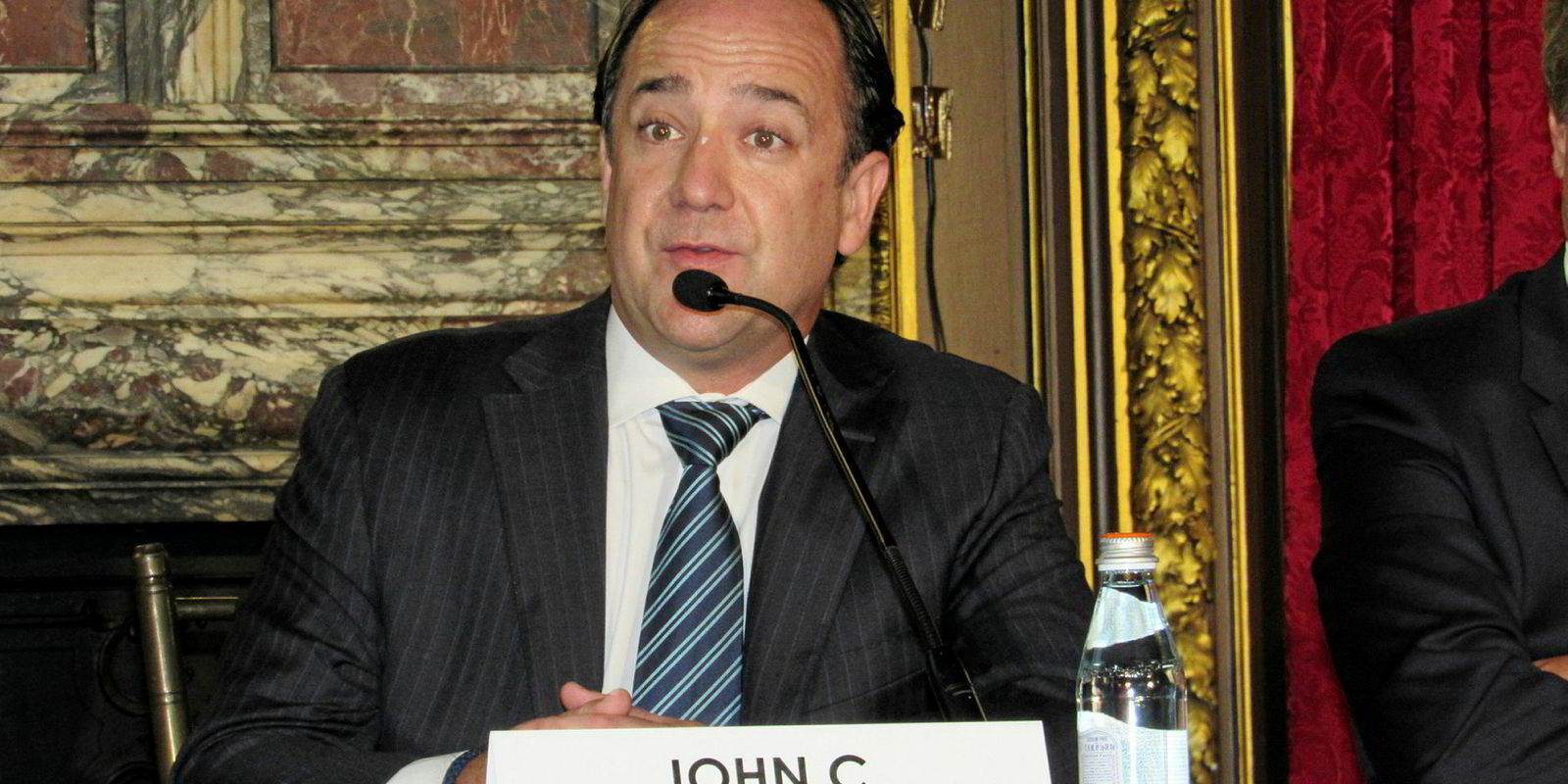Maxim Group has begun following Genco Shipping & Trading with an optimistic outlook on the bulker owner and the sector itself.
Analyst James Jang listed several reasons for the positive stance on the New York-listed entity, including fleet size, flexible chartering strategy and "methodical approach" to IMO 2020.
He assigned a buy rating and 12-month target price of $22 to the John Wobensmith-led company. Shares rose 3.8% to $3.61 after one hour of trading.
"GNK owns one of the largest, most highly diversified fleets within the publicly traded shipping space," he wrote today in a note to clients.
"We believe the the large, diversified fleet could enable the company to realise outsized earnings as the drybulk sector climbs towards a sustainable recovery in 2H 2019."
Maxim expects capesize rates for the owner's 61 ships to average $25,337 per day in 2020, almost double last year's levels.
The investment banking firm also salutes Genco's agile use of the spot market through short-term charters while forecasting better drybulk rates as IMO 2020 approaches.
"This flexible chartering strategy helps to minimise downside risk while allowing for further upside once market rates improve," Jang said.
Regarding the sound approach to IMO 2020, he said Genco's plan to install scrubbers on possibly half its capesize-heavy fleet gives a "natural hedge" against widening fuel spreads.
More vessels on the way?
Given the company's financial fitness with debts pushed out to 2023, the company may be in the position to buy additional tonnage or other drybulk companies, he wrote.
He also said the company's share price is well below Maxim's net asset value estimate of $22.18 for 2020, and Genco should "outperform its drybulk peers" with its attractive profile.
Drybulk's future looks promising on China's building spree
Jang said "the worst is behind us" as Maxim believes the entire sector is coming off a cyclical low with capesize rates falling to a 30-year bottom during the first quarter of 2016.
He attributed the downward pressure to fleet oversupply, tweaking of China's slowing economy and lagging seaborne demand for iron ore amid unrealistic forecasts for a 2015 recovery.
"Since the trough of 2016, rates have strengthened for all drybulk vessels segments with spot and period rates ... firming, owing to what we expect to be a continuing tightness in the drybulk sector," he wrote.
"Most notable for the recent firmness has been the Chinese appetite for infrastructure spending and improving steel margins in 2018."
The nation's steel consumption may lessen later this year as a result of the US-China trade dispute, he said.





